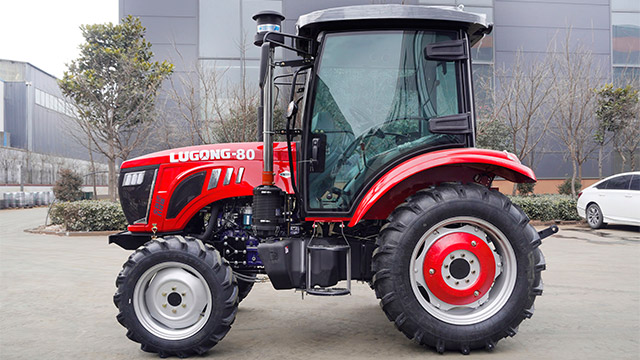The Development History Of Tractors
The Development History Of Tractors Introduction:
Tractors have played a pivotal role in revolutionizing agriculture and improving efficiency in farming practices. Over the years, tractors have undergone significant advancements, transforming from basic machines to powerful and versatile workhorses. This article aims to explore the development history of tractors, highlighting key milestones and technological breakthroughs that have shaped these indispensable machines.

The Development History Of Tractors
1. The Birth Of Early Tractors :Steam-Powered Tractors (19th Century)
– The first steam-powered tractor: In 1868, the Brayton Brothers introduced the first steam-powered tractor, which utilized steam engines for propulsion. However, these early tractors were large, cumbersome, and inefficient.
– The development of gasoline-powered tractors: In the late 19th century, inventors such as John Froelich and Charles W. Hart introduced tractors powered by gasoline engines. These tractors were smaller, more maneuverable, and marked a significant step towards modern agriculture machinery.
2. Gasoline And Diesel Powered Tractors Emerge (Early 20th Century)
– The Fordson Model F: In 1917, Henry Ford revolutionized the tractor industry with the introduction of the Fordson Model F. This tractor was the first mass-produced tractor, making it affordable and accessible to farmers around the world.
– The advent of diesel-powered tractors: In the 1920s, advancements in diesel engine technology led to the development of diesel-powered tractors. The introduction of diesel engines improved efficiency, reduced operating costs, and enhanced the overall power of tractors.
3. The Rise Of Hydraulic Systems And The Emergence Of Four-Wheel Drive Tractors (Mid-20th Century)
– The hydraulic three-point hitch: In the 1930s, Harry Ferguson introduced the hydraulic three-point hitch system, which allowed attachments and implements to be easily connected to tractors. This innovation greatly increased the versatility and efficiency of tractors.
– The introduction of four-wheel drive tractors: In the 1960s, manufacturers like International Harvester and John Deere introduced four-wheel drive tractors. These tractors provided better traction, increased pulling power, and improved maneuverability, making them ideal for heavy-duty tasks.
4. Modern Tractors : Technological Advancements And Precision Agriculture (Late 20th Century – Present)
– Computerized controls and GPS technology: In the late 20th century, tractors started incorporating computerized controls and GPS technology. These advancements allowed for precise guidance, automated steering, and improved efficiency in farming operations.
– Hybrid and electric tractors: With the growing emphasis on sustainability and environmental consciousness, manufacturers have begun developing hybrid and electric tractors. These tractors reduce emissions, lower fuel consumption, and offer quieter operation, contributing to a greener future.
The Development History Of Tractors Conclusion:
The development history of tractors is a testament to human innovation and the drive to improve efficiency in agriculture. From the early steam-powered machines to the modern computerized tractors, each milestone has contributed to the growth and transformation of the agricultural industry. As technology continues to advance, tractors will undoubtedly evolve further, paving the way for increased productivity and sustainable farming practices.


